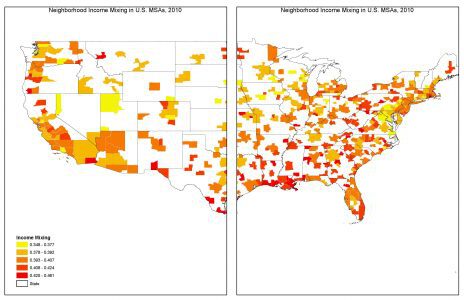Kane, Kevin and John R. Hipp. (2019). “Rising Inequality and Neighborhood Mixing in U.S. Metro Areas.” Regional Studies. 53(12): 1680-1695.
Abstract: “Superstar cities with high-paying creative-class jobs, venture capital, and innovation are thought to be more unequal. We analyze mixing in neighbourhoods by income, education and occupation, relating this intra-urban measure with regional productivity indicators. Using non-overlapping census units and a machine-learning estimation technique that iterates over all combinations of economic, business, housing and cultural indicators, we identify ‘ingredients’ associated with economically and socially diverse neighbourhoods. Broad support is not found that neighbourhoods in superstar regions are less mixed; however, overrepresentation in creative occupations stymies mixing as does a combination of weak economic fundamentals with high shares of new housing.”
